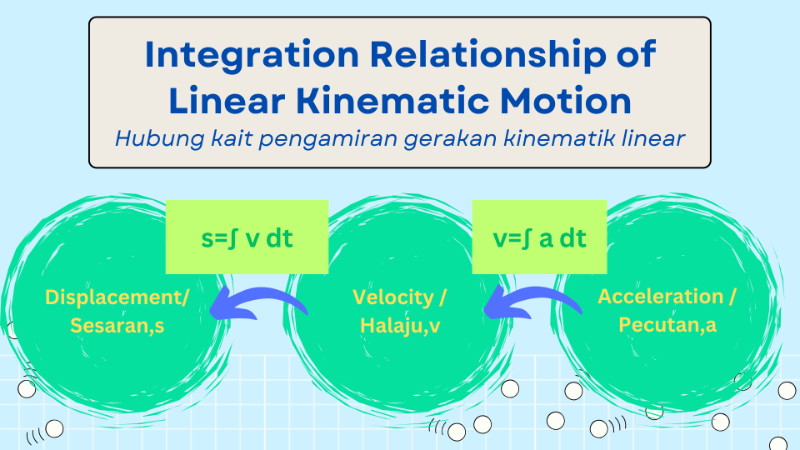8.3 INTEGRATION IN KINEMATICS OF LINEAR MOTION
You had learnt the acceleration function, a of a particle that moves linearly can be obtained by differentiating the velocity function, v with respect to time. t, that is: However, if the acceleration function, a, of a particle is given, how can we determine the velocity function,v of the particle? When the acceleration function , the velocity function, v can be determined by integrating the acceleration function, a with respect to time, t which is dt. In general, the relationship between acceleration function, a = h(t) and velocity function, v = g(t) can be simplified as follows:
Given a velocity function, v, how can we determine the displacement, s, of the particle? How can we determine the velocity function, v, and alsoy the displacement function, s, of a particle from an acceleration function, a? When the velocity function, v, is given as a function of time t, the displacement function, s, can be obtained by performing integration, which is: s=∫ v dt and when the acceleration function, a, is given as a function of time t, the displacement function, s, can be obtained by performing two consecutive integrations, which are: , then follow by
